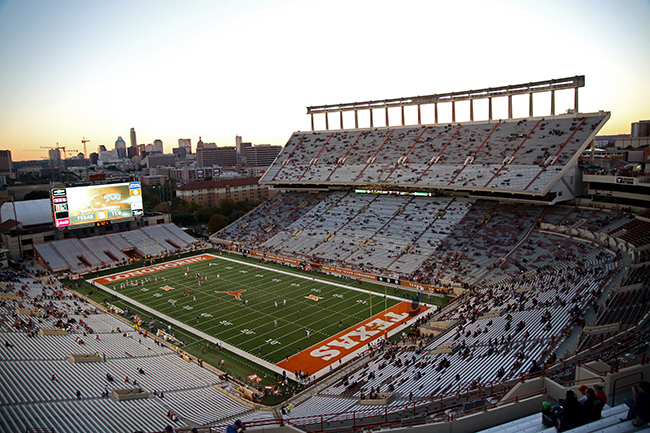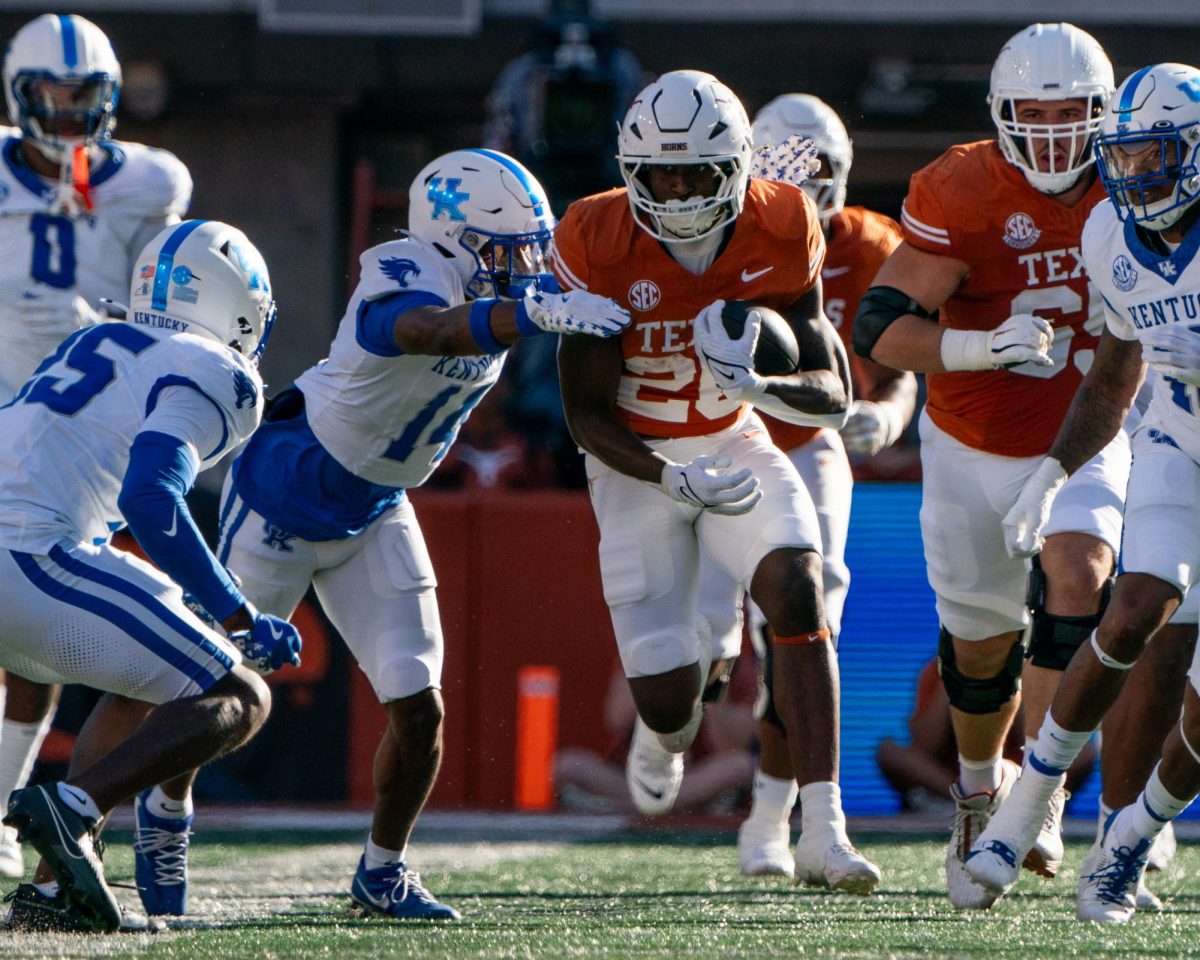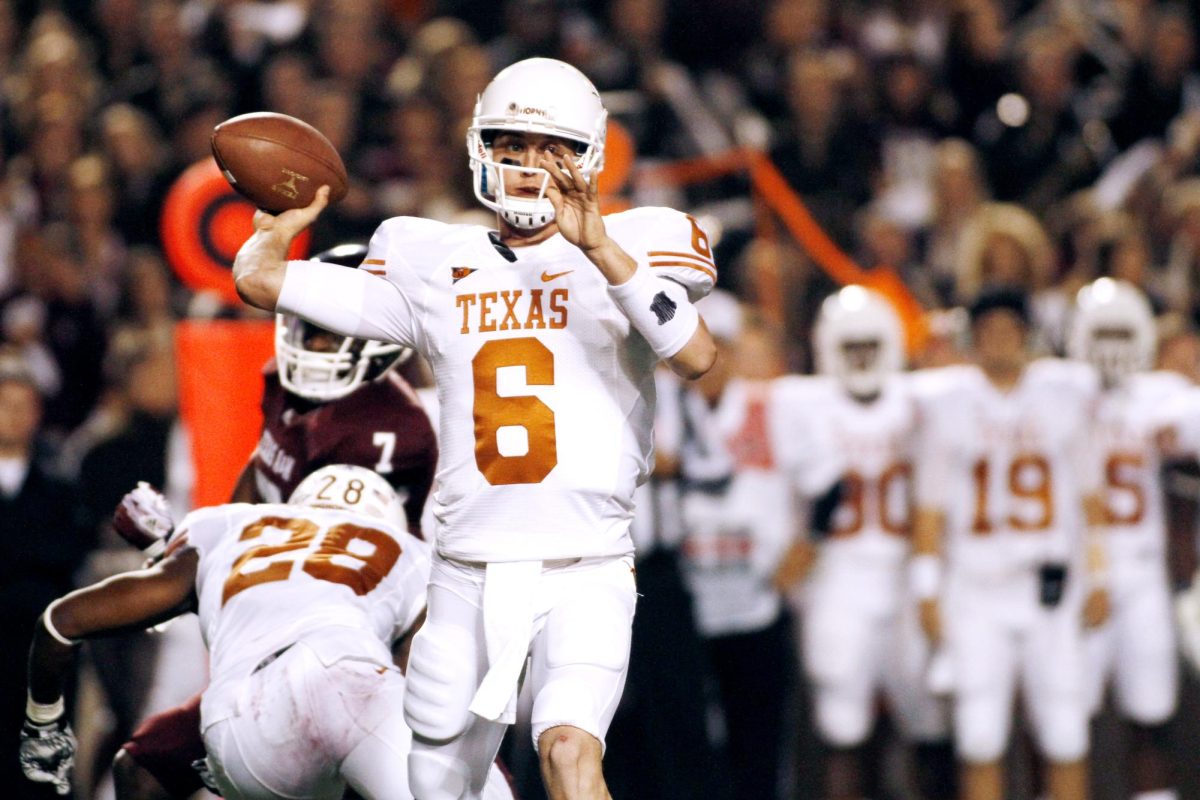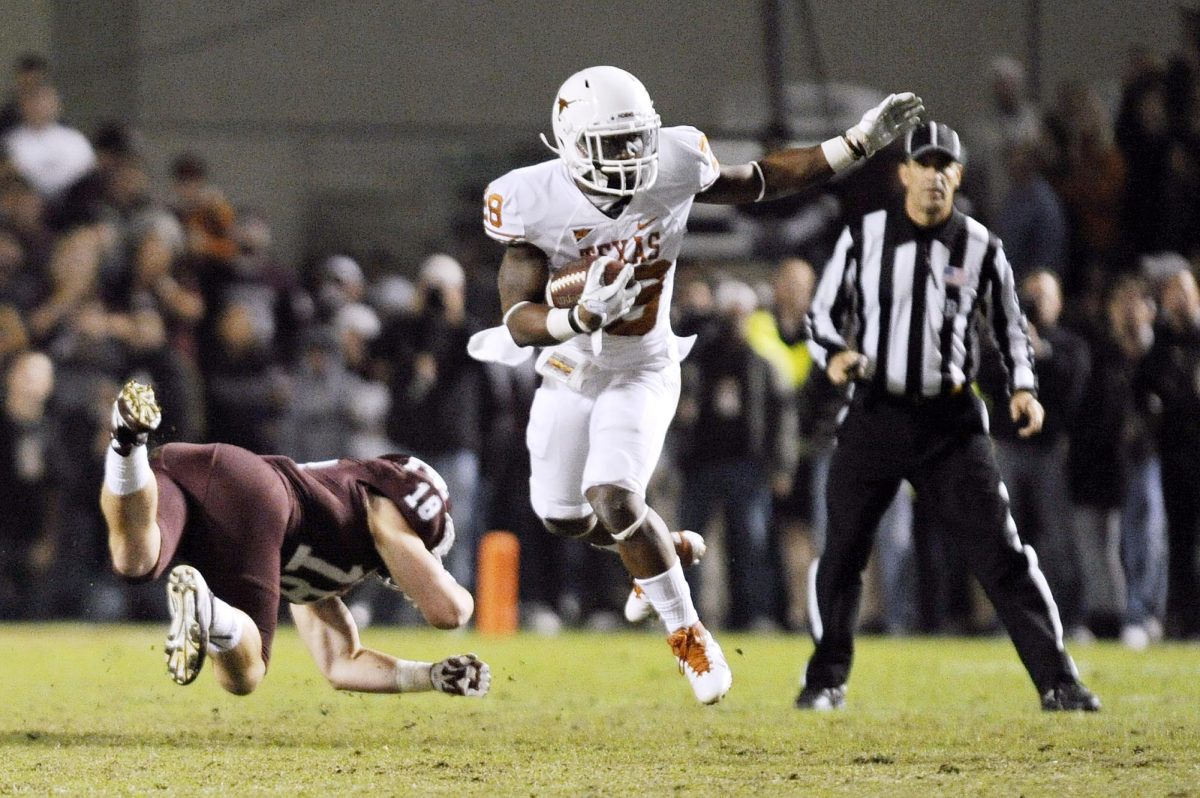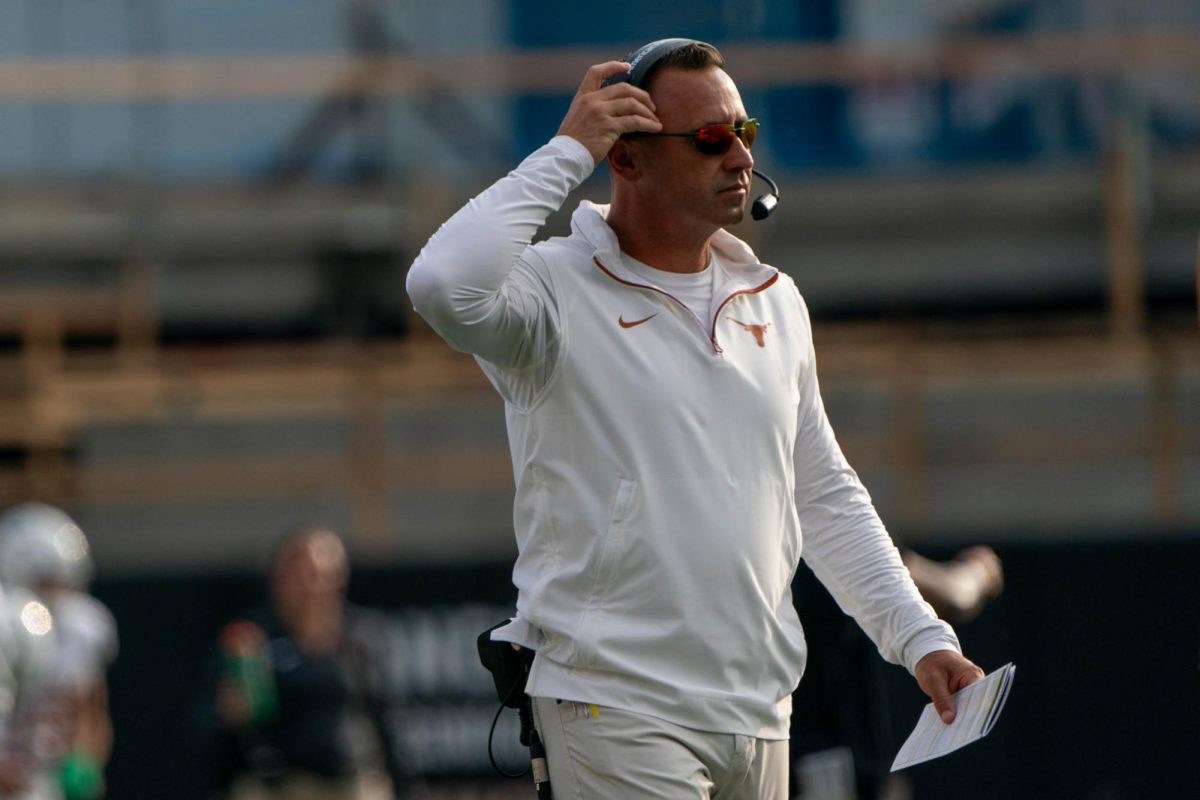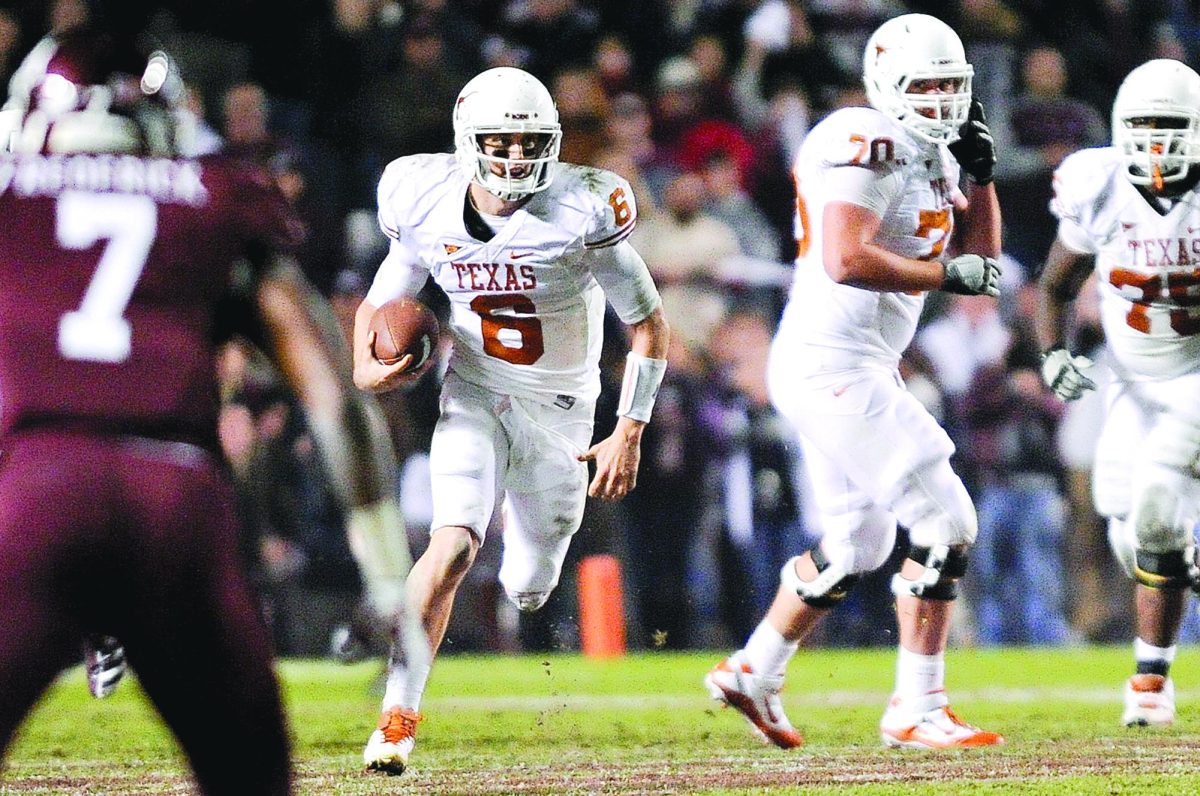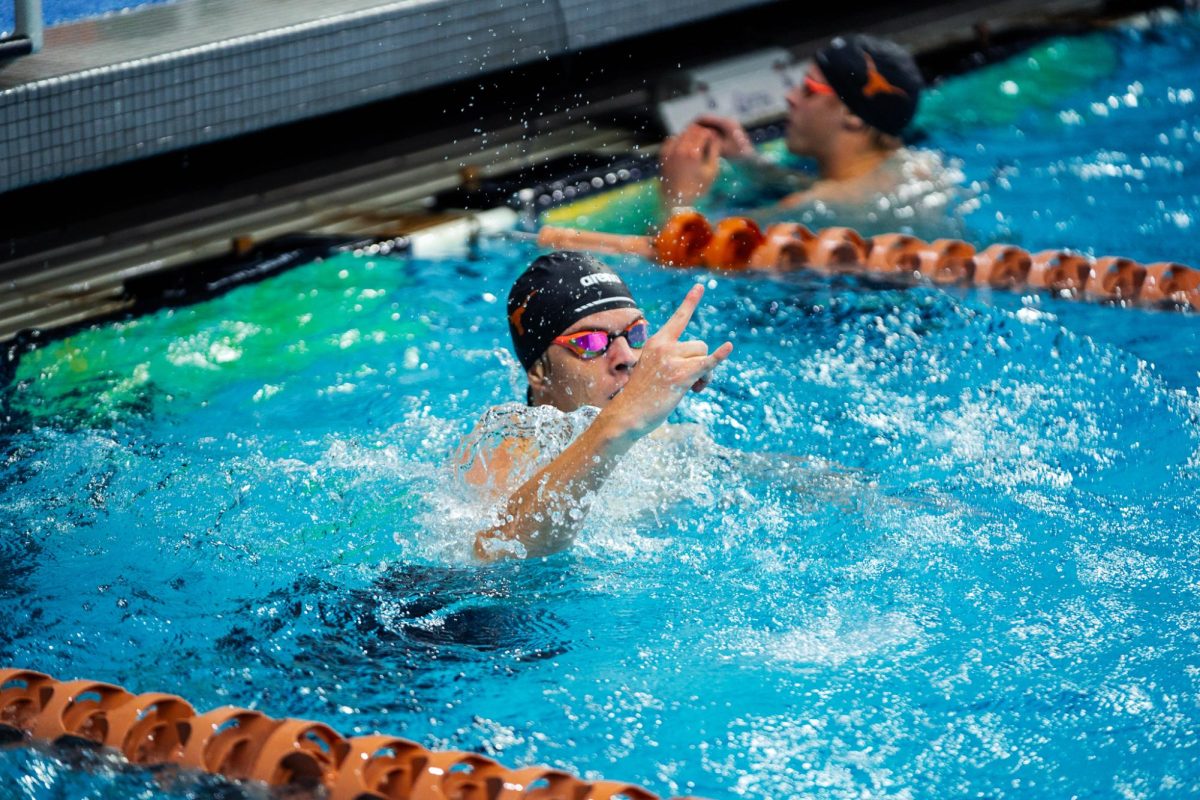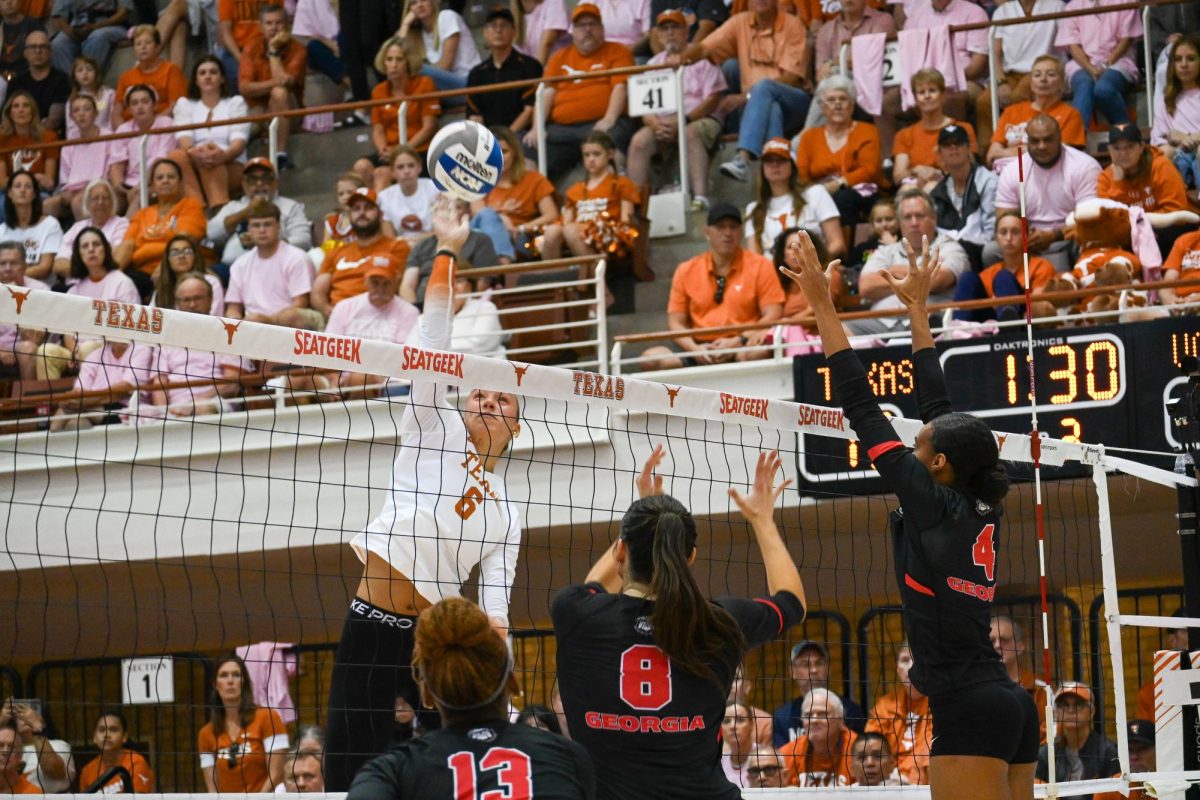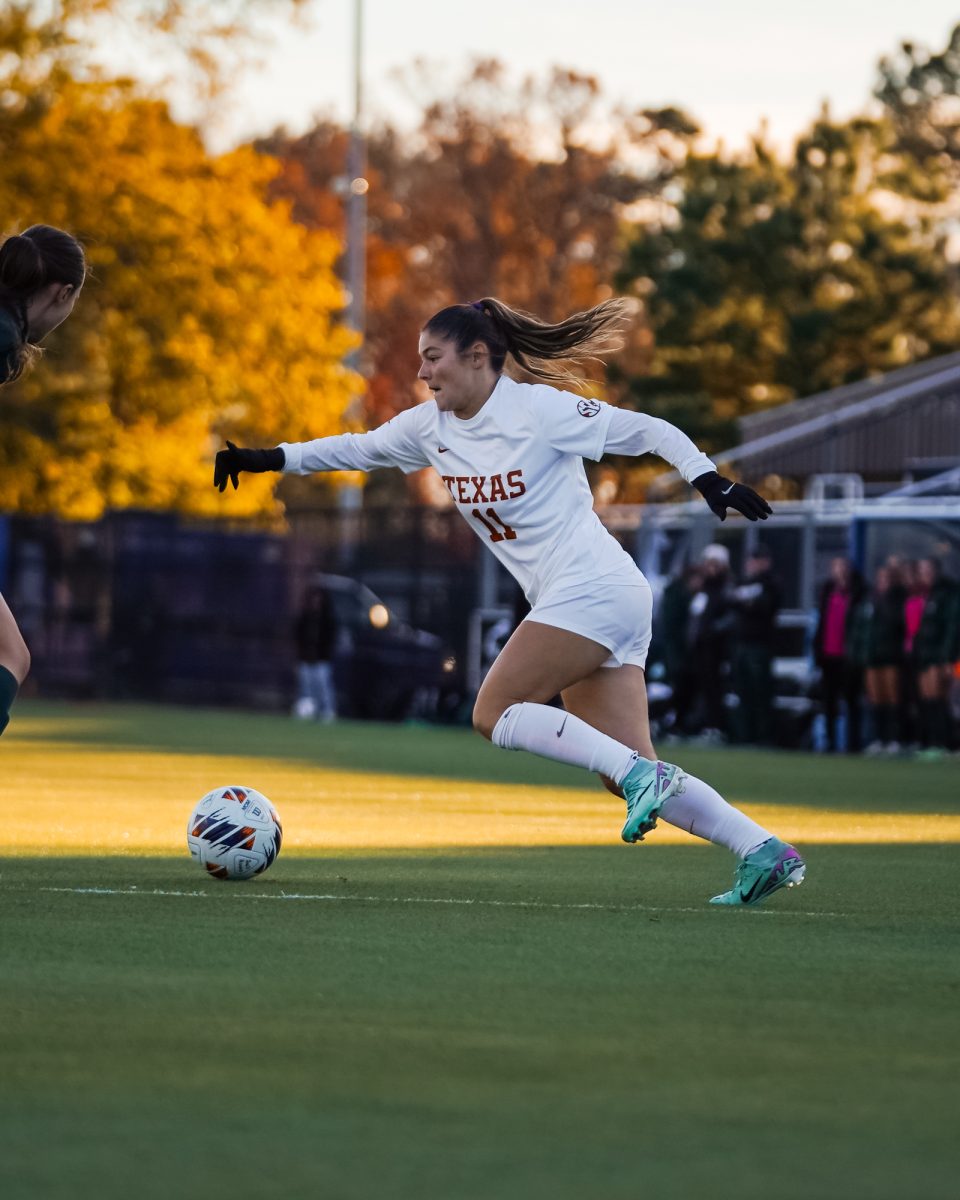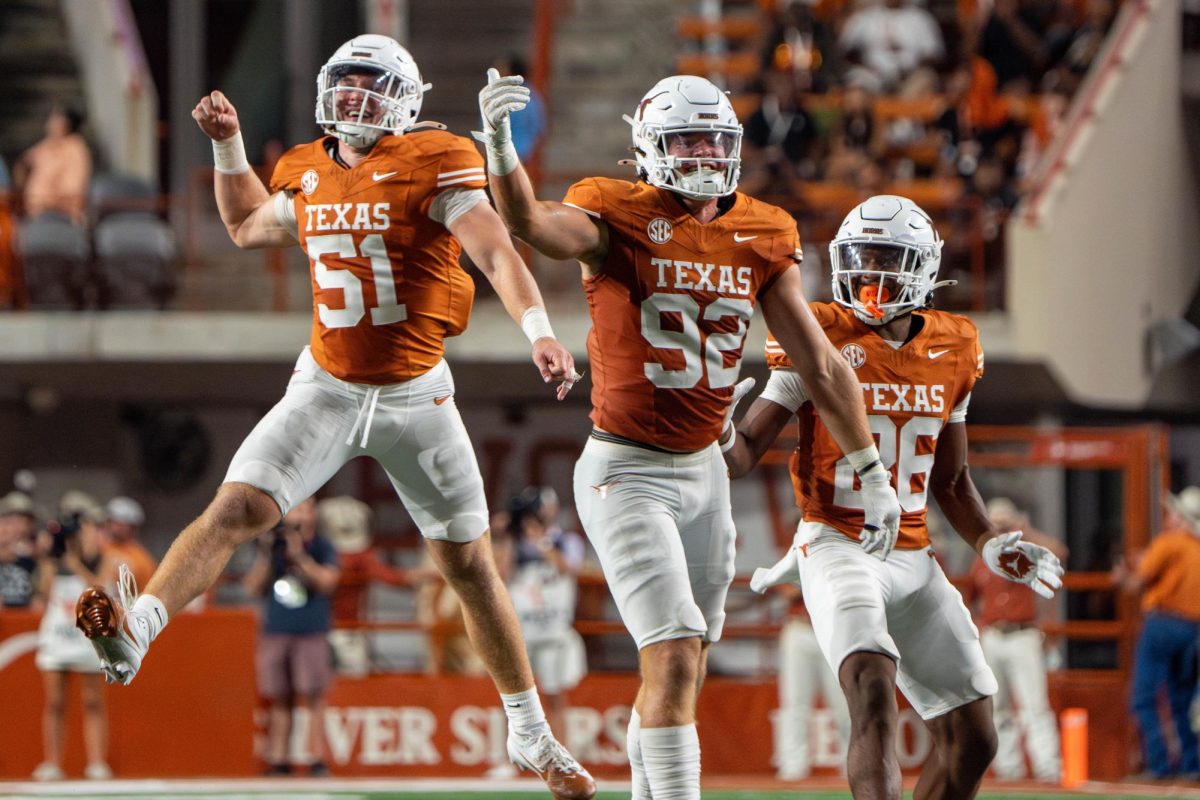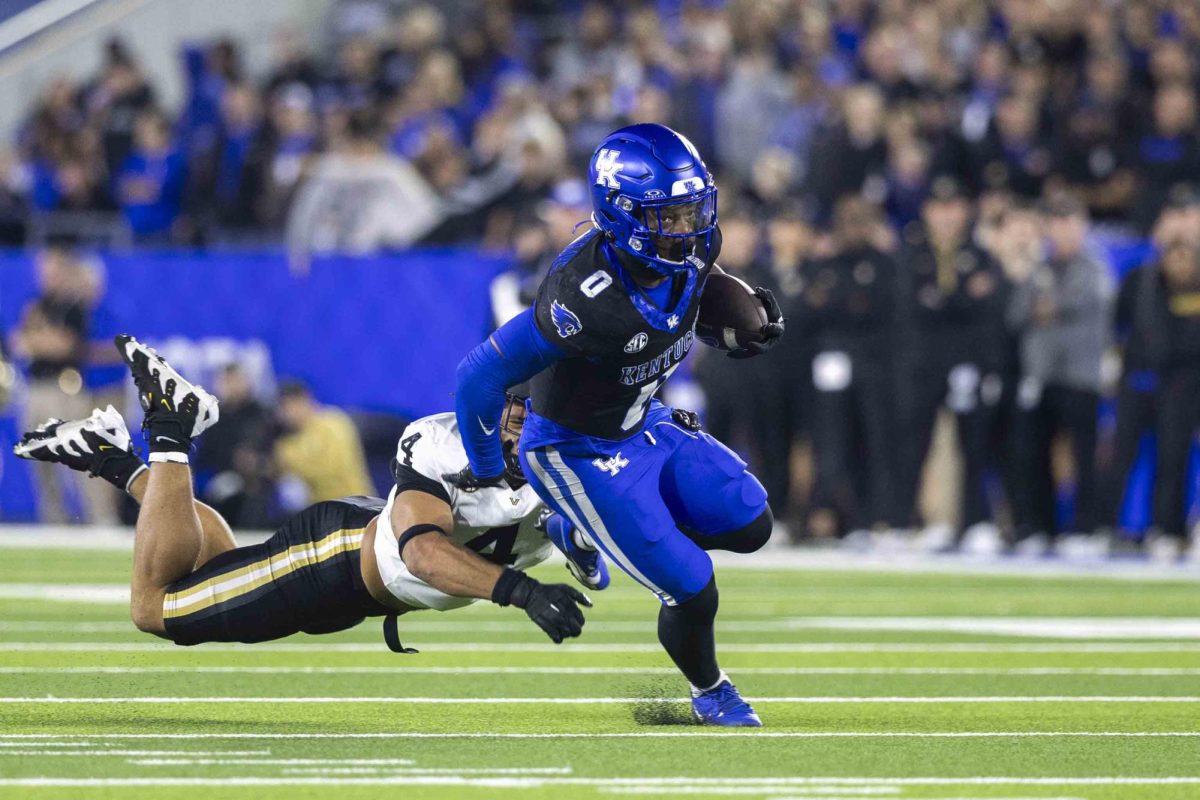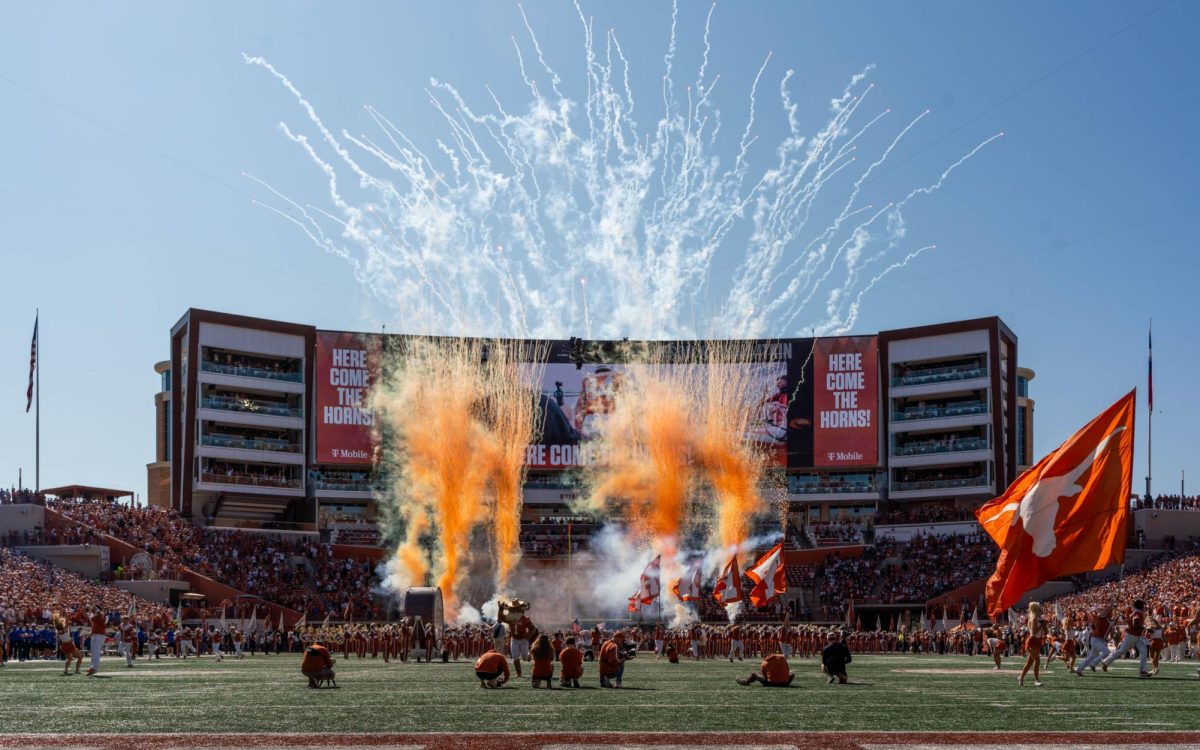Texas football isn’t what it used to be. And fans are starting to realize.
In the past five years, home football attendance has declined 11 percent. Texas averaged more than 100,000 fans per game in 2011, but Darrell K Royal-Texas Memorial Stadium now attracts closer to 89,000 per game. Texas Athletics measures attendance as the number of tickets it sells — when factoring in no-shows, turnouts are likely even smaller.
“Attendance is an area of focus for all collegiate programs,” Steve Hank, chief revenue officer of intercollegiate athletics, said. “As based on data from the completion of the 2014 season, overall attendance has declined for six consecutive years. The good news is that, based on surveys conducted at the end of last season and one that is in progress now, we’ve made great strides in the atmosphere and overall gameday experience.”
Students for Texas Athletics, a liaison between the athletics department and student body, offers input to the department. The organization also focuses on increasing student attendance.
“Any decrease in student attendance should be a student issue first,” Andrew Bramlett, liaison vice president and Plan II and business sophomore, said. “That’s something that we should try to take ownership of. I think a lot of it has to do with students deciding that they want to be there to support the team.”
Still, the 2015 decline was steepest — a 5 percent drop from 2014. Reports say rising ticket prices are a leading factor. Former athletic director Steve Patterson increased season ticket prices by an average of 6 percent after 2014. Roughly 10,000 fans did not renew their season tickets. Additionally, Patterson limited faculty and staff benefits. This season’s faculty and staff ticket pass — the “FAST” pass — only provides tickets on a standby basis the day before each game.
“Pricing is the first thing that alienated a lot of people,” graduate program administrator Phillip Guerrero said. “The biggest argument I had against the new faculty and staff pricing scheme was the fact that you pay $199, but you’re not guaranteed at all that you will have tickets. So had the football team been doing very well, and every game was sold out, I would have never gotten seats to a football game.”
Still, Hank said athletics considers fans a priority.
“Our relationship with all of our constituents — fans, students, donors, faculty, staff and our coaches and student athletes — is always the primary focus of the athletics department,” Hank said. “That philosophy will continue moving forward.”
Data indicates performance could also affect attendance. Although Texas is averaging 20 more yards and 4 more points per game than it did in 2014, the Longhorns have entered 80 percent of this season’s games with a sub-.500 record. Last year, the Longhorns kicked off at home with a losing record only twice.
In higher-scoring years, the stadium consistently surpassed its 100,119-seat capacity. From 2011 to 2013, the Longhorns averaged 416 yards and 31 points per game. In Charlie Strong’s first two years, those numbers dropped to roughly 350 yards and 23 points per game. Crowd size now rarely hits 92,000.
But Texas’ record and ranking correlate more closely with attendance than offense does. Texas posted a 25-14 record from 2011 to 2013 and consistently ranked within the top 25. More recently, Strong’s team was ranked briefly in 2014 before losing to BYU. The team has not cracked the top 25 since.
Even so, Hank said athletics anticipates strong attendance in 2016. Home opponents will include Notre Dame, TCU and Baylor.
“While the on-field results are certainly not where any of us would like them to be, we are confident the future is bright for Texas football,” Hank said. “We’ve seen the emergence of a number of great young players throughout this season. … We are looking forward to a great year.”
Redirecting to main article…
Click here if you’re not redirected.

